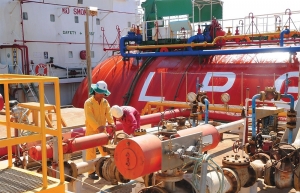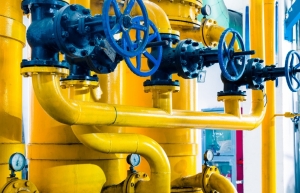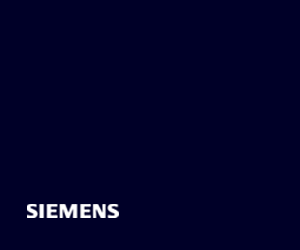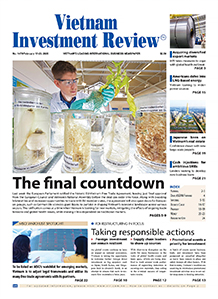Players in LNG tackle planning bottlenecks
 |
| Liquefied natural gas is in alignment with global trends for greener and more stable energy sources, photo Le Toan |
At the end of May, during a meeting in the US with Minister of Industry and Trade Nguyen Hong Dien, Peter Haas, vice president of liquefied natural gas (LNG) provider Excelerate, stated that the group is ready to expand investment and cooperation in Vietnam if supported by the governments of the two countries.
“We recognise the potential in developing gas-fired power projects as well as the potential of Vietnam to become a centre for storing and distributing LNG in Southeast Asia, which is why we set up an office in Vietnam in 2021,” Haas said.
He proposed three specific directions of cooperation: developing LNG infrastructure, ensuring a stable supply, and establishing a joint venture with a Vietnamese partner to expand the market, aiming to make Vietnam an LNG distribution centre in Southeast Asia.
“To attract investors, the Vietnamese government is currently considering reducing import taxes on LNG; along with many other attractive incentives,” Minister Dien stated.
According to the Power Development Plan VIII (PDP8), to ensure national energy security, Vietnam will build 14 LNG plants, and so supplying the gas is one of the top priorities. Vietnam also supports businesses trading in LNG, including reducing the import tax from 5 to 2 per cent.
At a workshop in Hanoi on May 21, Song Soohwan, commercial manager of LNG at SK Innovation E&S, highly appreciated the opportunities of Vietnam to play an important role in the LNG value chain, especially in the supply chain related to coastal vessels and operating systems.
“LNG is associated with the global trend towards green, stable energy sources that meet increasingly high environmental standards. Therefore, along with the energy transition trend, Vietnam has the opportunity to participate in the value chain thanks to its stable economic growth and increasingly important role in the international arena,” he said.
“Moreover, Vietnam is also a country highly appreciated for its production capacity in the gas industry and mastering related technology will be an important stepping stone for Vietnam to master hydrogen technology in the future,” he added.
However, Do Tien Thinh, deputy director of the National Innovation Centre under the Ministry of Finance, said that the development of the industry and the value chain in Vietnam is struggling.
For example, converting coal-fired power plants to LNG plants to achieve the goal of net-zero emissions by 2050 is very challenging and costly. Furthermore, Vietnam is also lacking high-quality human resources related to LNG because universities train this industry as a chemical industry instead of an applied energy industry needed in the future.
“Therefore, to meet the human resource needs for new power plants according to the adjusted PDP8, we need the synchronous coordination between schools, businesses and research institutes,” Thinh proposed.
Based on many years of experience in solar energy and LNG, Haas from SK suggested Vietnam to consider the model of medium-sized gas stations located in industrial parks.
“With Vietnam’s long coastline and current transportation infrastructure, gas stations distributed in industrial areas would be more suitable to optimise investment costs and be flexible in supply, similar to the experience in Taiwan,” he said.
However, currently, some provinces such as Thanh Hoa and Nghe An are considering using floating storage and regasification.
“This, despite its high cost and concerns about its ability to withstand storms in the central region, has the advantage of fast construction time and is being proposed by consultants and corporations as a solution to planning bottlenecks,” Thinh explained. Therefore, Vietnam is in the process of studying and choosing a suitable option.
SK Group is proposing to build integrated industrial development centres in Vietnam aligned with LNG plants, including an AI and innovation centre in the North Central region, a hydrogen and logistics centre in the South Central region, and an environmentally friendly agricultural centre in the Mekong Delta region.
Additionally, SK is also developing LNG power plants in Vietnam. In Nghe An, SK participated in the bidding for the Quynh Lap venture worth $2.1 billion. In Thanh Hoa province, the Cong Thanh plant is expected to change from coal to LNG with a total investment of $2 billion.
In March, in the US, Excelerate Energy and Petrovietnam Gas Corporation signed an agreement on importing LNG from the US.
According to PDP8, by 2030, Vietnam plans to develop a port system, power station infrastructure, and LNG power plants with a total maximum power capacity of 22,400MW.
 | American groups take mantle in LNG-to-power initiatives The growing race among enterprises to invest in power projects in Vietnam is poised to significantly increase imports from various markets, with the United States emerging as a key supplier. |
 | New life injected into idle ventures in LNG Global energy giants and financial investors are renewing their interest in Vietnam’s evolving liquefied natural gas (LNG) landscape, breathing new life into several long-stalled power ventures. |
 | Excelerate Energy advances strategic LNG cooperation with Vietnam US energy firm Excelerate Energy is fast tracking its long-term investment plans in Vietnam, signalling a stronger push to expand its global liquefied natural gas infrastructure footprint through partnerships with local firms, including state-owned Petrovietnam Gas. |
What the stars mean:
★ Poor ★ ★ Promising ★★★ Good ★★★★ Very good ★★★★★ Exceptional
Related Contents
Latest News
More News
- Offshore wind sector requires pinpoint mechanisms (June 06, 2025 | 09:34)
- Vietnam outlines ambitious energy roadmap with export potential and renewable hubs (June 03, 2025 | 15:41)
- Dong Nai has the tools to take digital transformation lead (May 31, 2025 | 09:00)
- UK and EU welcome Vietnam's energy transition progress (May 30, 2025 | 17:40)
- Ministry of Finance issues plan to develop carbon market (May 30, 2025 | 17:25)
- Ministry of Industry and Trade seeks feedback on OSW power pricing (May 30, 2025 | 16:55)
- France and EU back climate-resilient infrastructure in Ninh Thuan (May 29, 2025 | 20:55)
- Towards a Norway-Vietnam strategic green partnership (May 29, 2025 | 20:45)
- HDF Energy, Southern Power Corporation partner to advance green hydrogen power (May 28, 2025 | 19:21)
- Malaysia, Vietnam, and Singapore firms promote renewable energy exports (May 27, 2025 | 15:42)


 Tag:
Tag:















 Mobile Version
Mobile Version